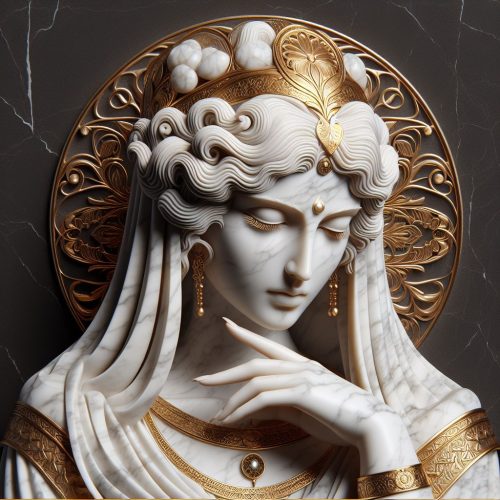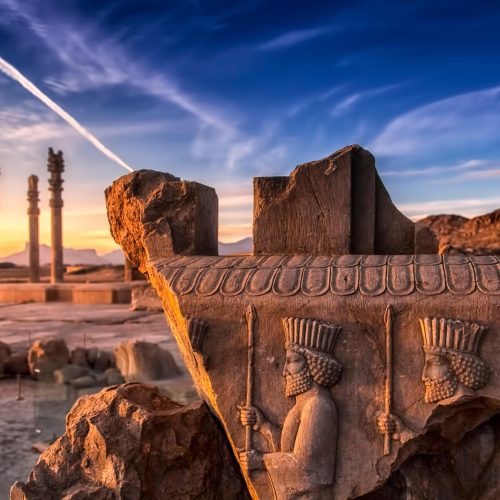In the annals of time, certain names echo through the corridors of history with a resonance that transcends the passage of centuries. Abu Ali al-Husayn ibn Abdullah ibn Sina, known to the West as Avicenna, stands as one such titan—an illustrious philosopher, physician, and polymath of extraordinary intellect whose influence extended across the breadth of the Islamic world and beyond. His name is synonymous with wisdom, and his works, an embodiment of the lofty ideals of philosophy and science, still hold a revered place in the intellectual traditions of both the East and the West.
Born in the golden age of Islamic thought, Ibn Sina’s legacy is that of a master who fused reason and revelation, who sought to reconcile the teachings of the ancients with the metaphysical truths of his time. As I reflect upon his life and contributions, I am reminded of the grandeur of our civilization, where men of profound wisdom illuminated the darkness with the light of reason and inquiry. Let us, then, embark on a journey through the life, philosophy, and enduring legacy of this sage—a man whose brilliance illuminated the skies of human thought.
Biography: A Life of Learning and Wonder
The life of Ibn Sina unfolds like a tale from the pages of a grand epic, his early years marked by precocious genius and his later years consumed by the fire of intellectual pursuits. Born in the year 980 CE in the village of Afshana, near Bukhara—a city in modern-day Uzbekistan that was then a flourishing center of learning—Ibn Sina’s early life was suffused with the pursuit of knowledge. His father, an esteemed government official, recognized the boy’s prodigious talents and ensured that he was instructed by the best scholars of the time.
From a young age, Ibn Sina demonstrated an insatiable curiosity and a sharp intellect. By the age of ten, he had committed the entire Quran to memory, a feat that was but a small reflection of his greater hunger for knowledge. He was introduced to the rudiments of logic, mathematics, and natural sciences under the tutelage of local scholars, but his learning did not stop there. By his early teens, Ibn Sina had surpassed his teachers, and his thirst for understanding drove him to delve into the great works of Greek philosophy—particularly the writings of Aristotle and Plato, whose metaphysical inquiries would profoundly shape his own philosophical outlook.
It was, however, in the field of medicine that Ibn Sina’s genius was first truly recognized. At the tender age of sixteen, he began practicing medicine, and such was his skill that, by the age of eighteen, he had earned the title of physician. His fame as a healer spread quickly, and he was summoned to treat none other than Nuh II, the ruler of the Samanid dynasty. After curing the monarch of an illness that had baffled other physicians, Ibn Sina was granted access to the Samanid royal library, one of the richest repositories of knowledge in the world at the time. It was here, surrounded by the works of ancient and contemporary scholars, that Ibn Sina deepened his study of philosophy and the natural sciences.
The twilight of the Samanid dynasty and the rise of the Buyid rulers forced Ibn Sina to wander across the Persian lands, seeking refuge in courts and libraries wherever they could be found. Despite the political turbulence of the era, these wandering years were some of his most productive. It was during this time that he composed the majority of his philosophical, medical, and scientific treatises, works that would cement his reputation as one of the most celebrated thinkers in history.
Ibn Sina passed from this world in 1037 CE, in the city of Hamadan, where he had served as a physician and vizier to the local ruler. He was only fifty-eight years old, yet his contributions to human knowledge were vast and immortal. His death marked the end of a life spent in pursuit of wisdom, but his works would continue to inspire scholars for centuries to come.
Philosophy: The Union of Reason and Metaphysics
In the realm of philosophy, Ibn Sina stands as a towering figure—a man whose thought bridges the ancient wisdom of Greece with the mystical truths of Islamic metaphysics. His intellectual project was to harmonize the rationalism of Aristotelian philosophy with the more spiritual aspects of Neoplatonism and the doctrinal tenets of Islam. This was no small feat, for the tension between reason and revelation has long been a central dilemma for philosophers. Yet, Ibn Sina approached this challenge with both rigor and subtlety, crafting a vision of the cosmos that was at once logical, metaphysical, and theological.
At the heart of Ibn Sina’s philosophy is the concept of being—a concept he explored through his famous distinction between essence (mahiyya) and existence (wujud). For Ibn Sina, everything that exists in the world can be said to have an essence, but existence is something that is “added” to that essence. In this way, he argued that existence is not a necessary attribute of things in the world, but rather something that is bestowed upon them by a higher, external force. This leads us to his proof of the existence of God, whom he described as the Necessary Being (Wajib al-Wujud)—the one being whose essence is identical to His existence, and who is therefore the source of all contingent beings in the universe.
Ibn Sina’s understanding of God as the Necessary Existent is closely tied to his metaphysical system, which posits a hierarchical structure of existence. At the top of this hierarchy is God, the First Cause and the ultimate source of all being. Below God are the Intellects (or Angels), followed by the souls of the celestial spheres, and finally, the material world. Human beings, who occupy a unique position in this cosmic order, possess both a material body and an immortal soul. For Ibn Sina, the human soul is immaterial and eternal, capable of intellectual contemplation and destined to return to the divine realm after death.
Ibn Sina’s philosophy also delves into the nature of knowledge. He adopted a rationalist epistemology, arguing that true knowledge is attained through the intellect’s capacity to grasp universal truths. He believed that the human intellect, when properly trained, could ascend to a level of understanding akin to that of the active intellect, a divine intermediary between God and the world of human thought. This ascent to knowledge, in Ibn Sina’s view, was not just an intellectual exercise but a spiritual journey—a path that would bring the soul closer to God.
Principal Works: Treasures of Knowledge and Wisdom
Ibn Sina’s literary output was prodigious. He is said to have composed over 450 works, though only around 240 have survived. These writings encompass a wide range of disciplines—philosophy, medicine, logic, theology, metaphysics, and science—and stand as a testament to his vast knowledge and insatiable curiosity. Among his most celebrated works are two that continue to be studied and revered: The Canon of Medicine and The Book of Healing.
- The Canon of Medicine (Al-Qanun fi al-Tibb): Of all of Ibn Sina’s works, none is more famous than his Canon of Medicine, a five-volume encyclopedia that systematically compiles the medical knowledge of the ancient world with Ibn Sina’s own observations and theories. Written in a time when medical science was still in its infancy, the Canon was a groundbreaking text, offering a comprehensive account of human anatomy, pathology, pharmacology, and therapeutic practices. It was translated into Latin in the 12th century and became the standard medical textbook in Europe for centuries, influencing physicians and scholars well into the Renaissance.
The Canon of Medicine is structured with meticulous attention to detail, dividing diseases by their symptoms and locations in the body, and offering remedies based on the humoral theory—the belief that the balance of bodily fluids (blood, phlegm, yellow bile, and black bile) determines health. Ibn Sina’s insights into contagious diseases, quarantine practices, and the medicinal use of herbs reflect his profound understanding of medicine as both an art and a science.
- The Book of Healing (Kitab al-Shifa): Ibn Sina’s Book of Healing is a monumental work in the field of philosophy and metaphysics. Despite its title, it is not a medical text, but rather a philosophical treatise aimed at “healing” the soul through knowledge. It is divided into four main sections: logic, natural sciences, mathematics, and metaphysics. In each section, Ibn Sina seeks to demonstrate the unity of all knowledge, linking the physical and spiritual worlds in a grand metaphysical system.
In the section on metaphysics, Ibn Sina offers one of the most detailed arguments for the existence of God as the Necessary Being. His treatment of cosmology, the nature of the soul, and the relationship between matter and form shows the influence of both Aristotle and Neoplatonism, but with Ibn Sina’s unique philosophical insights woven throughout.
Other Contributions: A Polymath’s Mastery
Though Ibn Sina is best known for his contributions to medicine and philosophy, his genius extended far beyond these fields. He made significant contributions to astronomy, chemistry, mathematics, and music, among other disciplines.
In astronomy, Ibn Sina built upon the work of Ptolemy, developing theories about the motion of celestial bodies and the structure of the cosmos. His belief in a geocentric model of the universe, where the Earth was at the center, remained influential until the advent of Copernican heliocentrism. However, Ibn Sina’s insistence on the need for empirical observation in the study of the stars laid the groundwork for future developments in astronomical science.
In the realm of chemistry, Ibn Sina’s work on alchemy and the transformation of substances was pioneering. While the notion of alchemy as a mystical practice would eventually be discredited, Ibn Sina’s insights into the properties of matter and his experiments with distillation and sublimation were early steps toward the development of modern chemistry.
His interests also extended to mathematics, where he contributed to geometry and arithmetic. He also composed treatises on music theory, exploring the mathematical ratios that underpin musical harmony and rhythm, showing that his love for science was complemented by an appreciation of the arts.
Legacy: A Light That Shines Across the Ages
Ibn Sina’s influence on the intellectual history of the world cannot be overstated. His works shaped the course of philosophy and science in both the Islamic world and Europe for centuries after his death. In the West, Latin translations of his works were studied by medieval scholars, including Thomas Aquinas, who engaged with Ibn Sina’s metaphysical ideas as part of the broader Scholastic tradition. The Canon of Medicine was used as a standard medical text in Europe until the 17th century, earning Ibn Sina a place alongside Hippocrates and Galen as one of the great physicians of antiquity.
In the Islamic world, Ibn Sina became known as the Shaykh al-Ra’is (the Leader among the Wise), and his works continued to be studied in madrasas and universities for generations. His integration of Greek philosophy with Islamic theology laid the foundations for the later development of Islamic philosophy, influencing figures such as Al-Ghazali, Suhrawardi, and Mulla Sadra.
The enduring legacy of Ibn Sina can be seen in the institutions that bear his name, from hospitals to universities, as well as in the continued study of his works by scholars across the world. His life serves as a reminder of the boundless potential of the human mind and the power of knowledge to transcend time and space.
List of Works: A Testament to Ibn Sina’s Genius
- The Canon of Medicine (Al-Qanun fi al-Tibb): A comprehensive medical encyclopedia that remained the authoritative text on medicine for centuries.
- The Book of Healing (Kitab al-Shifa): A philosophical treatise that covers logic, metaphysics, natural sciences, and mathematics.
- Kitab al-Najat (The Book of Deliverance): A shorter version of The Book of Healing, focusing on metaphysical and philosophical issues.
- Kitab al-Isharat wa al-Tanbihat (The Book of Pointers and Remarks): A philosophical text that explores logic, ethics, and metaphysics.
- Risalah fi Sirr al-Qadar (Treatise on the Secret of Destiny): A work that discusses the nature of fate and predestination.
- Kitab al-Nafs (Book of the Soul): A treatise on the nature of the human soul, its faculties, and its relation to the body.
- Kitab al-Adwiyya al-Qalbiyya (The Book on Cardiac Remedies): A medical treatise on diseases of the heart and their treatments.
In contemplating the life and works of Ibn Sina, we are drawn into a world of profound inquiry, where reason and faith walk hand in hand, and where the pursuit of truth leads to the highest understanding of the universe and our place within it. His life was a testament to the boundless possibilities of human intellect, and his legacy continues to inspire those who seek to understand the mysteries of existence. He remains, in the truest sense, a sage for all time, a light that shines undimmed across the ages.




